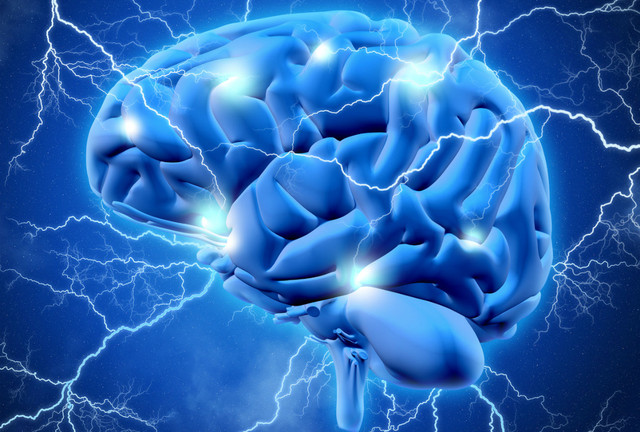
Well it is now all over. The surgeries anyway. And the unit (Neurostimulator) has been turned on. And I am happy to report that I am no longer experiencing dystonia (no more cramping feet) and most of the stiffness is gone! Plus, I have gone from taking Levodopa every 3 hours down to only 4 times a day! Less pills, less motor symptoms – yes, I have to call this almost science fiction type surgery a success!!

Although I still have some tuning to have done which most likely will take 3-6 months (or about 6 sessions on average) to get everything tweaked ‘just’ right with the stimulation! But my journey to an ‘electric’ brain is now complete!
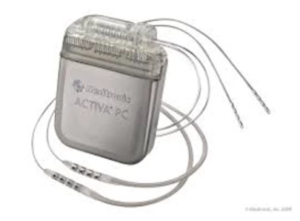
Neurostimulator Implantation
They were right – the brain surgery was nothing compared to the neurostimulator implant. Not terrible, mind you – I’m sure there are worse surgeries to have – but this one left me much more sore than the actual brain implants. Luckily after about a week things are a lot better and most of the soreness has gone away.
I can’t tell you much about the procedure itself as I was asleep during this time. I never had general anesthesia before, but all I remember is the guy putting the mask over my mouth and saying don’t worry and breathe deeply – this stuff is pretty powerful… yeah right… after about 2 deep breaths the next thing I remember was someone telling me ‘Wake up Tom’. I was done and in recovery! I then felt the additional staples in the left side of my head (darn it, another bad haircut! I wonder what vitamin causes hair to grow faster??) and feeling the wires running down the side of my neck when I moved around. Plus it felt like I had a large weight in my left chest – the neurostimulator, which actually is somewhat small and doesn’t weigh much (only ounces in fact); but it felt that way to me the first time after I woke up. And yes, I was much more sore than last time. But luckily I had no nausea or upset stomach, and since it had been almost 24 hours earlier that I had eaten anything, when they asked if I wanted some coffee, cookies and/or ice cream I said a big YES. Which one they asked? All three was my answer! And by golly they provided all three which I promptly gobbled up. (my stomach said ‘ahhhh….)
Since this was just outpatient surgery, about 2 hours later we were leaving the hospital heading home! And l only had to take one ‘real’ pain pill the next night, and just Tylenol for a couple of days after that, so I guess that yeah, it definitely could have been worse.
How this all fits together
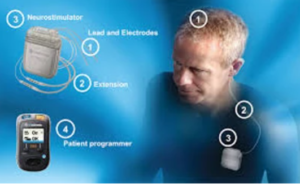
So how does this all work together? The leads in the brain are connected to the the neurostimulator in the chest via flexible cables (I was told like a bungee cord). When the neurostimulator is turned on, it delivers a specified voltage – defined by the programmer (i.e. neurologist) – to a specific electrode(s) on each lead on each side of the brain. Each of those leads can get different voltages or different electrodes energized. Basically, each side of the rain can be customized to that patient’s level of need and specific symptoms.
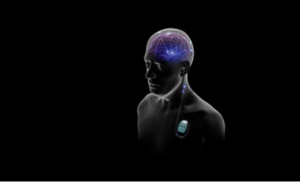
The BIG Turn On!
This last Friday (March 31) came the telltale moment – or, as I’ve said all along, the Charlie Brown ‘Sydney or the bush!’ moment, when I came in my neurologist’s office to have the unit turned on the first time! Now we would see if this was all worth it.
I have to say I felt pretty crappy that morning, since (once again) I had to go 12 hours without any meds; which meant little sleep, cramped up feet, and major stiffness. My neurologist (and her excellent nurse) first put a cover containing a radio frequency communication device over the neurostimulator in my chest. This was attached to their handheld version of the programmer unit (which ‘talks’ to the neurostimulator via radio signals). Then, they began to turn on each electrode one at a time, starting on the right side of the brain (since symptoms first started on my left side).
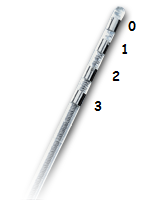
You see, the electrodes in my brain each have 4 contacts labeled 0-3. In my case it seems like 0 and 1 are the ones that are directly in the STN, so when they turned them on I definitely noticed a difference. They started at about .5 volts and increased by the same amount. They told me (and I’ve heard from others) that I might ‘feel’ this the first time – kinda like a buzz or a small jolt in my brain – but every PD patient is different and, in my case, I felt no such feeling. But at about 1.0 volts I noticed that my cramped up feet began to relax and the stiffness started going away! But by 3+ volts I started having side effects like light-headedness and speech issues – i.e. my tongue felt ‘thick’ and my speech was slurred. So, for the first tuning, the right brain side electrode(s) was left at 2.0v – because that side was where my symptoms first started – i.e. the left side of my body. And the left brain side electrode was set to 1.5v. And how/which electrodes (0-3) were ‘on’ is kinda complicated – even after my doctor’s PA tried to explain it, I am not exactly sure. I guess that means some more research on my end as to how these leads are exactly ‘energized’.
But no matter – that’s how they left the settings – later on they may increase or decrease the voltage, or adjust my medicine to better affect my motor symptoms. So when I left there on Friday with the unit turned on, I had no more cramps (Miss Dystonia had taken a hike! HA! Bye bye and good riddance!) and the stiffness was basically gone! But it appears that my brain takes a little longer to adjust to everything, because by the next morning I found that my right arm was almost constantly dyskinetic (i.e. moving around all the time like it had a mind of it’s own) so obviously I was being overstimulated on that side. So I went back early this week for another session to tune that side down a bit to about 1.3v and that made the extra movement go away!

I, as every DBS patient does, gets their own patient programmer. This allows you turn off the unit (only if need be – because then all your PD symptoms come back) and to turn it back on in case, for whatever reason, it gets accidentally turned off (like by the metal detectors at the airport). But even more cool, if your neurologist decides to allow you, it can be used to slightly modify your own settings! Perhaps you find that a certain higher setting may really fix tremor or rigidity but cause slight speech issues – so if you need to do some fine delicate work with your hands you can switch to that setting for a time. Or maybe you need to do some speaking or singing in the choir so you want your speech to be perfect but don’t mind slight rigidity or tremor – again you could then switch to a slightly different setting. Or, in my case, while searching for the ‘best’ overall setting, my neurologist may put in an extra lower and higher setting so that I can ‘play’ with it during the time between sessions in order to help find my best ‘sweet spot’. Again, it all depends on what your neurologist feels that you can do on your own or for special circumstances.
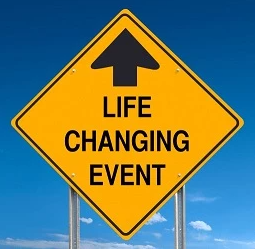
Yes, It WAS Worth It and IS Life Changing
So, even with the slight tuning that will be needed (and was expected) I am happy to report that, for me, this whole thing WAS worth it and truly IS life changing! After she turned on the unit in the office that morning, I went out in the hallway, walked around, and did the first 17 moves of my Tai Chi set. For the first time in 5 years I had NO cramps and felt very flexible – almost like I did before I had any symptoms of PD! I am not a very emotional person, but I almost lost it for a moment coming back into the office with my wife, doctor and nurse – yes it was that kind of moment!
I am going to have to say (once again) that I am NOT a doctor, and that everyone is different, and these are my personal reflections only! I cannot and will not take any responsibility for anyone else’s decisions or actions. But if you are considering this surgery, please talk to your own neurologist about it; and if they feel it will work for you, all I can tell you is that if it does work it most likely will be a life changing moment for you also! But again there are risks involved with the procedure; therefore only you and your own neurologist can make that final decision.

I have to, at this time, issue some great big THANK YOU’s to a number of folks: First to my wonderful neurosurgeon Dr. Steve Klafeta – your expertise in this surgery, if you ask me, is unparalleled. You have given me back my life, at least for a number of years! And another thank you to my neurologist, Dr. Jessica Hedeman, for her work with me and belief that this surgery would help me – without your expertise I would probably have never considered this procedure. And to all the folks at Hauenstein Neurosciences Mercy Health for having such a facility available for those of us with this devastating disease. Also a big thanks to all those who thought and prayed for me during this time. But most of all, a super giant THANK YOU to my wife, Karen, for encouraging, loving, and putting up with me during this time. No words can express my thanks!
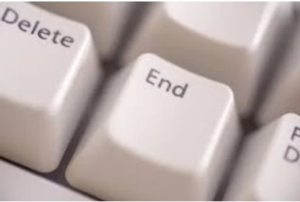
The END?
Well I think that is going to complete my DBS series of blogs. No, this is NOT the end of my blog, as I have plenty of other ‘deep brain thoughts’ to discuss with you, my readers. But this most likely is the last one of my DBS postings unless something changes or new technology comes out for DBS. Or I may throw in something once all the tuning is complete, maybe some reflections on the whole procedure itself. We’ll see….
So keep reading, my loyal readers, as I have other topics to write about – hopefully with some continued humor! I think my next post(s) will deal with Technology – some software for PD Patients to track their meds and symptoms with and just some general tech ramblings. And I think I may talk a little bit in the future about supplements – what I take and why. Plus, now that I am retired, you KNOW I have to talk about that; especially since I can now do more things with the DBS on!
Stay tuned, more will be coming down the line. And please, if you have ANY questions on DBS or want to start a discussion feel free to do so below in the discussion area. I will do my best to answer any questions posted. In fact, shortly I will have a forum available on my site for you guys to discuss things and/or ask me questions regarding DBS, PD, or anything else I talk about. I am hoping to have that ready in a week or so. Also, if possible, I may make myself available LIVE on the site for anyone to ask any questions about the surgery or my experience with DBS in general. If so, I will announce a time and date on the blog site here.
Thanks for reading… and remember to enjoy each day of life to the best of your abilities. Till next time!



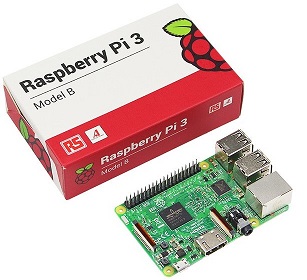

Great blog, really liked it. I’m thinking about DBS and this helps. Thank you.
Thanks, Gary… Glad it helped you out! Let me know if you want to know anything else I may have experienced.